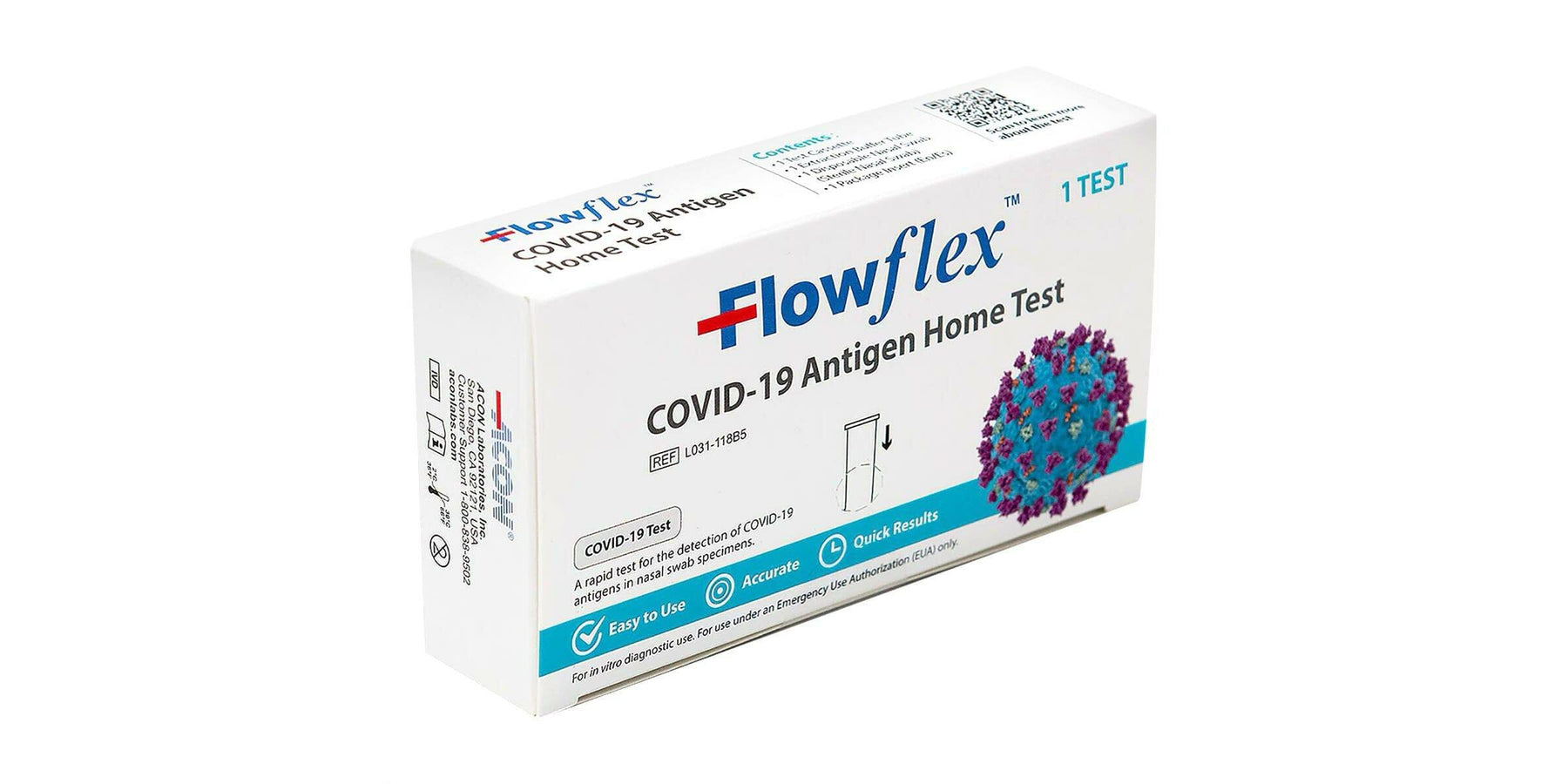
COVID Rapid Antigen Test
At-home COVID-19 Tests
ACON Laboratories’ FlowFlex COVID Antigen Rapid Test was authorized back in October, adding another rapid antigen test to the current over-the-counter lineup of tests. It is one of eight authorized antigen tests, which detect the presence of the SARS-CoV-2 nucleocapsid protein. Large retailers like Walmart, Amazon, and Kroger have agreed to sell at-home tests at cost. The at-home rapid test industry is under a lot of demand and manufacturing is scaling up significantly, with manufacturers increasing capacity to drive down the costs of each test. The current lack of at-home tests has led people to driving from store to store and monitoring online sellers. To combat the shortage, the FDA said that ACON Laboratories plans to produce more than 100 million Flowflex test kits per month by the end of the year. By February 2022, the company expects to produce 200 million Flowflex test kits a month. In late May of 2021, four antigen and two molecular OTC tests that the FDA had authorized at the time were tested. These tests included Abbott’s BINAXNow, among other test kits. Like BINAXNow, Flowflex is a lateral flow test. After a person swabs their nose, they submerge the swab in a liquid buffer, which is then applied to a test strip containing antibodies to the nucleocapsid protein. If the person has COVID, pieces of the viral nucleocapsid will bind to an antibody and travel up the strip to where a second antibody is waiting. Binding the second antibody creates a visual readout in the form of a line. ACON reports that the Flowflex test gives a false negative 3% of the time and a false positive less than 1% of the time.
According to the FDA, the Flowflex test only needs to be taken once a person is symptomatic, while other tests need to be taken twice, with days between them, in case the amount of viral protein does not meet the detection threshold of the first test. In addition to Flowflex, three other antigen tests have been authorized since May. Testing is essential to stopping the spread of the Omicron variant, but nearly two years into the pandemic, many people are still confused about the best way to get tested for COVID, or frustrated that they can’t find a test. Stores have run out of home tests, and long lines at testing centers have made it difficult for people to find out quickly if they are infected. The new Flowflex at-home test should help alleviate this problem.
Is one type of test better than the other?
Virus tests are categorized based on what they look for: molecular tests, which look for the virus’s genetic material, and rapid antigen tests that look for viral proteins. But comparing rapid antigen tests and lab tests is sort of like comparing an X-ray to an MRI scan. Both tests are reliable, serve unique purposes and can be useful at different times. The advantage of an X-ray is that it’s cheap, fast and pretty good at spotting obvious problems. An MRI takes much longer and costs a lot more but gives you a more precise look at what’s going on in the body.
The advantage of rapid antigen tests such as Flowflex, whether they are taken at home or at a testing center, is that they are fast, relatively cheap and are highly reliable for telling you right now if you’re spreading the virus. A laboratory test is more sensitive, but it takes more time to get the result. Both tests are useful, but with a fast-spreading COVID variant like Omicron, a rapid test can prompt someone to isolate a few days sooner.
An antigen test like Flowflex hunts for pieces of coronavirus proteins. Most rapid home antigen tests work like a pregnancy test — if virus antigens are detected in the sample, a line on a paper test strip turns dark. The tests are highly reliable for telling you if you’re spreading the virus on the day you take the test, but a single test won’t tell you that you definitely don’t have coronavirus. The main advantage of the test is that it’s fast, and can be used to lower the risk of small indoor gatherings.
When is the best time to take a rapid home test before seeing family for the holidays?
Home tests can tell you whether you are infected with COVID right now. You should test as close as possible to the time of the gathering, preferably about an hour or two before everyone gets together. While it’s important to test on the same day of the event, if you have extra time or extra tests, two tests over a few days are better than one. A negative test does not lower your risk to zero, but taking a test significantly reduces the risk that someone at the gathering will transmit the virus. If you’re traveling, you should test the day you travel to make sure you’re not infecting fellow passengers. Once you arrive at the destination, you should test within two or three days to make sure you didn’t pick up the virus along the way.
The most important precaution is that everyone at the gathering is fully vaccinated and have a booster shot. But since even vaccinated people can still spread the Omicron variant, rapid testing with at-home kits such as Flowflex a few hours before an event adds another layer of protection and can prevent an infected person from unknowingly spreading the virus. But if you can’t find rapid home tests, everyone should try to get a lab test as close as possible to the event, timing it so you get the results back before you see everyone.

Comments
Leave a comment